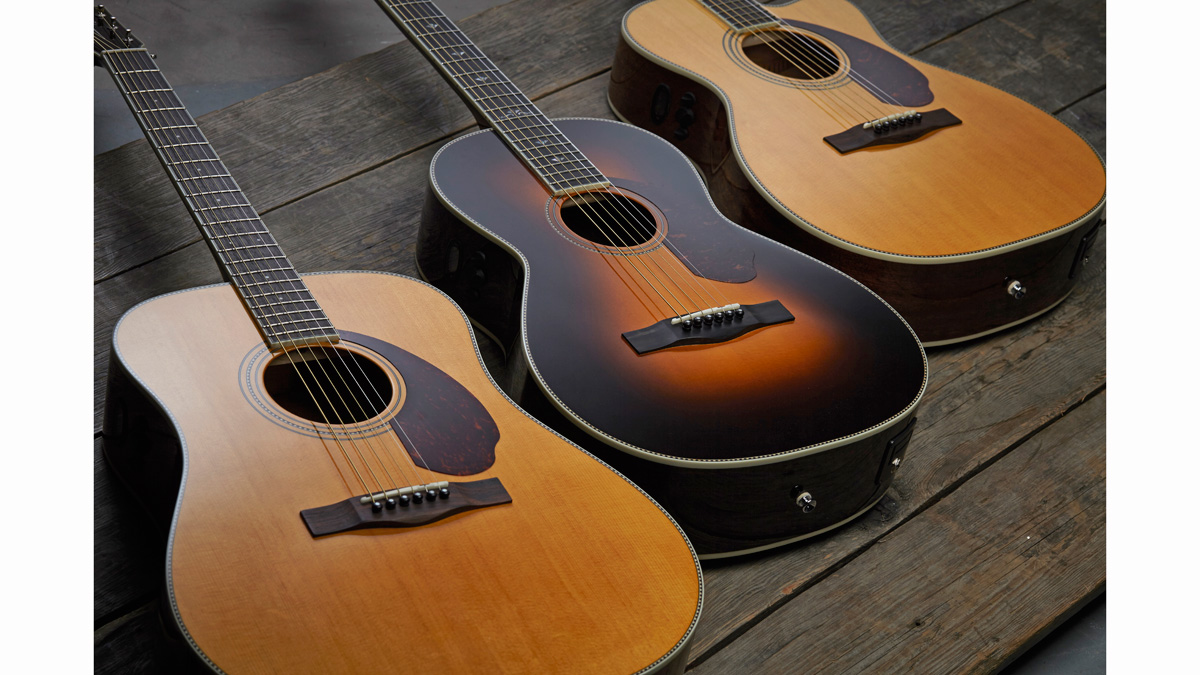MusicRadar Verdict
The PM-1 is light in weight and feel and sounds just as good acoustically as it does amplified and offers excellent strum-friendly projection.
Pros
- +
Light. Attractive price. Solid all-rounder.
Cons
- -
We may prefer the PM-3.
MusicRadar's got your back
While most of us would happily give houseroom to a classic Fender electric or amp, a Fender acoustic is a less obvious choice, especially in the lower market area where we are swamped with choice.
On one hand, the raft of Asian-made brands offers very high specification for relatively little, while the big boys like Martin and Taylor have been highly active with their Mexican-made models. Fender, of course, has its own Mexican factory, but while that concentrates on its core amp and guitar products, its new Paramount range has USA design with Chinese build.
The Paramount range centres on three body styles - the PM-1 dreadnought, PM-2 parlour and PM-3 triple 0 - with all spruce- topped solidwood construction, with scalloped X-bracing, and gloss finishes in two specification levels, Standard (at £519) and Deluxe (at £629). Here we're looking at the PM-1 Standard.
The Standards have mahogany back and sides in a toned natural finish.
Despite the quite generic body styles, Fender maintains there's plenty of 'Fender DNA' here: aside from being conceived over a two-year period by Fender's top luthiers, we have '60s checkerboard rosette and purfling, a headstock shape inspired by the '70s F series acoustics, a '70s bridge design, a late -40s-style Fender logo and the 'cloud' pickguard seen on Kingman acoustics.
All Paramounts are electros with a unique Fender/ Fishman preamp. The modern-style design has a small squashed-oval screen displaying the onboard tuner, with three rubber-knobbed rotaries below it for bass, treble and overall volume. You engage the tuner by pressing on one side of the display and there's a phase push-switch on the other side. Each preamp is apparently voiced to suit the different body styles, too.
Our review guitar is light and resonant, with a full-shouldered C-shape neck profile that subtly differs in depth. Acoustically, the dread offers plenty of roomy projection with quite a 'new guitar' sounding upper-mid push. The parlour, the only 12-fret in the range, size- wise is in stark contrast but retains the mid push, albeit with a tighter bass. The triple 0, in size and sound, sits midway between the two with a more restrained midrange that's more balanced. It's the only cutaway, too.
Want all the hottest music and gear news, reviews, deals, features and more, direct to your inbox? Sign up here.
Sounds
The dread has a 643mm (25.3-inch) scale length and a 43mm (1.690-inch) nut width with regular Fender bridge spacing of 55mm.
The new-design pickup and preamp system is both classy and functional. The tuner is fast, the bass and treble EQs offers plenty of range, and that phase switch can be really handy on stage for feedback rejection.
For the most part, each style's acoustic character comes through amplified and, overall, there's a modern, 'enhanced' tonality with a near ubiquitous piezo tonality, which, frankly, we all take for granted, even though it's really not that natural sounding. So, on stage, you might need to tame the expansive lows of the dread a little; open out the mids and tune the crisp highs to your taste.
Dave Burrluck is one of the world’s most experienced guitar journalists, who started writing back in the '80s for International Musician and Recording World, co-founded The Guitar Magazine and has been the Gear Reviews Editor of Guitarist magazine for the past two decades. Along the way, Dave has been the sole author of The PRS Guitar Book and The Player's Guide to Guitar Maintenance as well as contributing to numerous other books on the electric guitar. Dave is an active gigging and recording musician and still finds time to make, repair and mod guitars, not least for Guitarist’s The Mod Squad.

